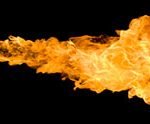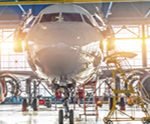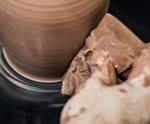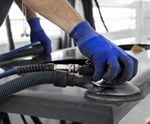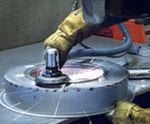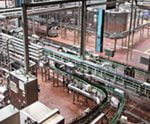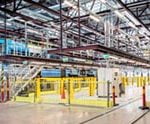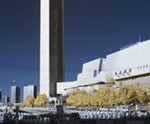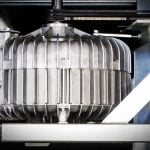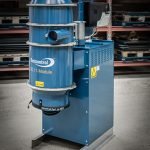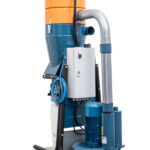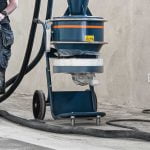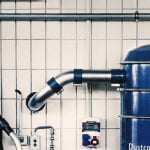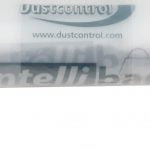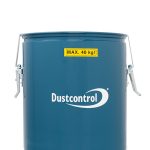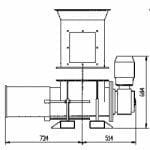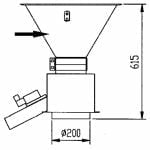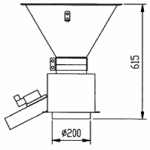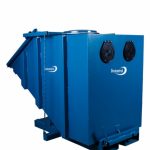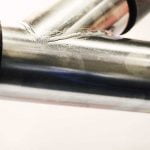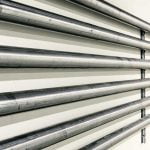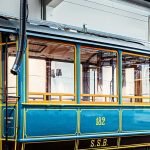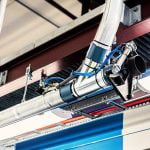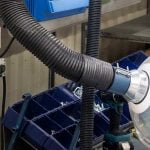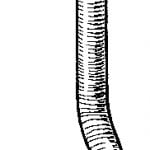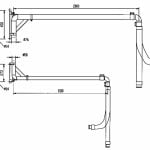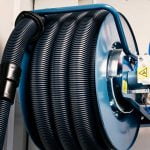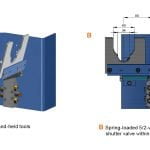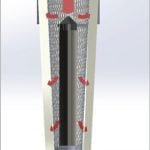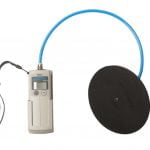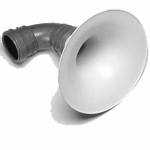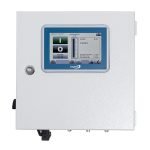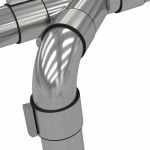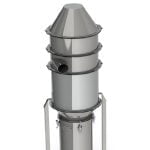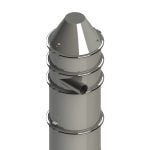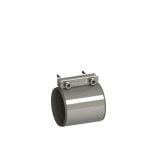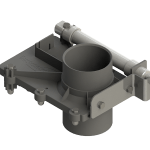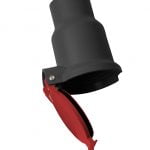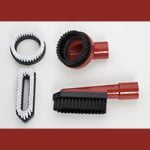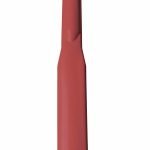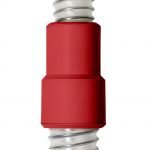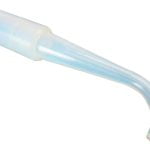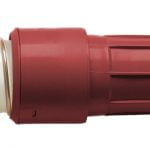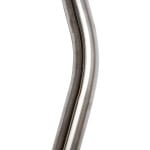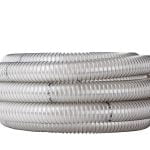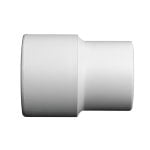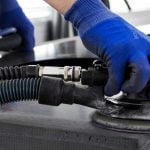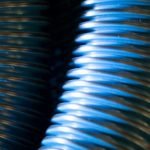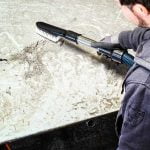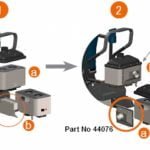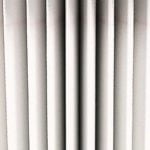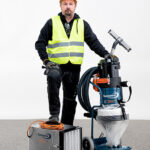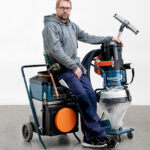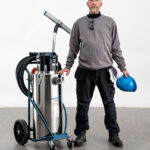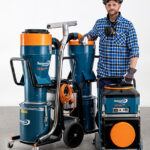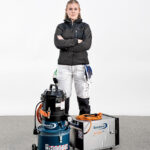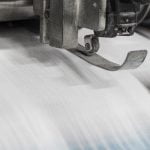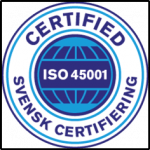Filter Units
An extraction system should always be equipped with a filter unit. The filter unit separates coarse material in the cyclone body of the unit and fine dust in an internal arrangement of conical pleated cartridge filters. Pleated filters have very high filter areas in relation to their physical size. The filter units therefore have high capacity while maintaining compact overall dimensions.
Filters are cleaned with reverse pulse which results in very effective cleaning, long filter life and low maintenance.
Normally the filter units are equipped with a plastic bag or container for collection of the extracted material but other types of discharge arrangements can also be installed.
General
In the filter unit, dust is separated from the air in several steps:
• the cyclone will separate particles down to a size of 1/100 mm.
• the filter will separate particles which escape the cyclone effect.
The dust laden air is introduced into the cyclone at a high velocity. Through centrifugal force the dust particles, with higher relative mass than the air molecules, are forced outward toward the wall of the cyclone and drop to the bottom. The air flows toward the centre of the cyclone and through the filter.
Filter Loading
Permissible air flow determines the air velocity through the filter material, known as filter loading. Consider also inlet/outlet velocities. Permissible filter loading varies with dust type.
| Dust Type | [m³/h/m²] |
|---|---|
| Stone | 120 |
| Concrete | 120 |
| Wood | 160 |
| Cement | 120 |
| Plastic | 120 |
| Graphite | 60 |
| Carbon black | 60 |
| Welding fume | 60 |
Example
For the extraction of welding fume, the maximum permissible flow in the S 34000 will be:
60 (m³/h)/m² x 34 m² filterarea = 2040 m²/h
The velocity of the air through the inlet and outlet should not exceed 30 m/s. When one filter unit does not have sufficient capacity, several units can be connected in parallel.
For more detailed information, please read our
-
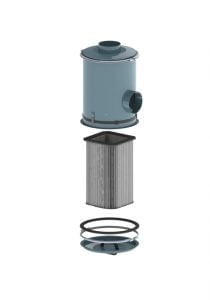
DC HEPA box
Filter Units, Stationary Vacuum SystemsThe DC HEPA box is intended to be used as... -
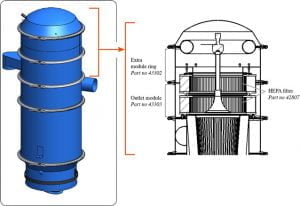
HEPA-Module
Filter Units, Stationary Vacuum SystemsEasy to mount on top of an existing S11000 ,... -
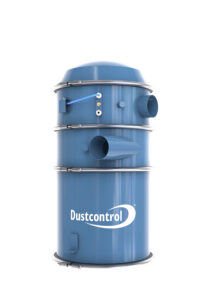
S 11000
Filter Units, Stationary Vacuum SystemsThe S 11000 filter unit is of modular construction and... -
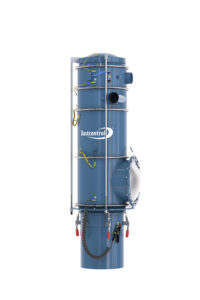
S 11000 EX
Filter Units, Stationary Vacuum SystemsThe S 11000 EX is the new generation high vacuum... -
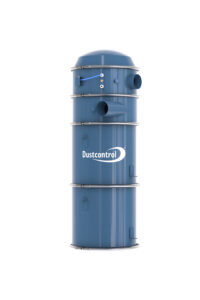
S 11000 X
Filter Units, Stationary Vacuum SystemsThe S 11000 X filter unit is of modular construction... -
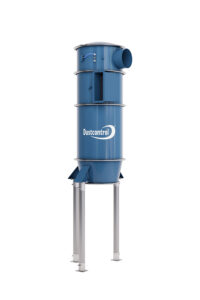
S 21000
Filter Units, Stationary Vacuum SystemsThe S 21000 and S 34000 are constructed of modules... -
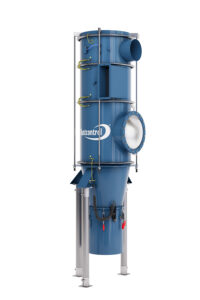
S 21000 EX
Filter Units, Stationary Vacuum SystemsThe S 21000 has been created in order to meet... -
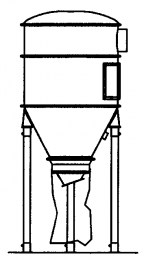
S 32000
Filter Units, Stationary Vacuum SystemsThe S 21000 and S 34000 are constructed of modules... -
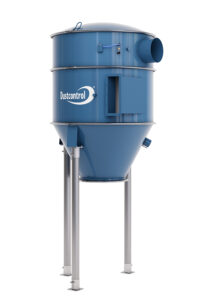
S 34000
Filter Units, Stationary Vacuum SystemsThe S 21000 and S 34000 are constructed of modules... -
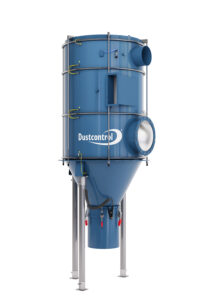
S 34000 EX
Filter Units, Stationary Vacuum SystemsThe S 34000 EX is a high vacuum dust collector... -
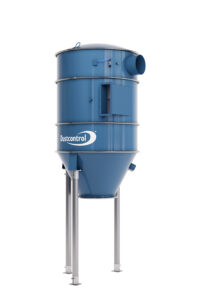
S 34000 X
Filter Units, Stationary Vacuum SystemsThe S 21000 and S 34000 are constructed of modules... -
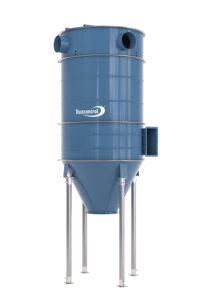
S 46000
Filter Units, Stationary Vacuum SystemsThe S 46000 is constructed of modules and is therefore...


